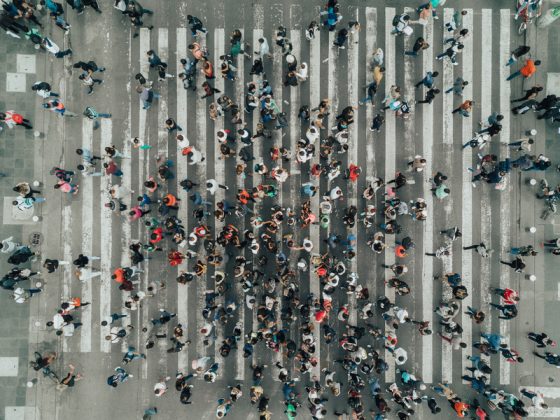Extreme heat already affects almost two billion urban residents around the world, according to a new study.
The new research is the first to examine in fine detail global trends in extreme heat exposure across urban areas. The study spanned more than 13,000 settlements over nearly three and a half decades.
The authors found that exposure to dangerous temperatures increased by 200% since the mid 1980s, with poor and marginalized people particularly at risk.

“Our study reveals that exposure to extreme heat in urban areas is much more widespread—and increasing in many more areas—than we had previously realized,” says coauthor Kelly Caylor, director of the Earth Research Institute at the University of California, Santa Barbara. “Almost one in five people on Earth experienced increases in exposure to urban heat over the past 30 years.”
The study in the Proceedings of the National Academy of Sciences is only the first of many that will delve into the rising threat of extreme heat and its impacts on society and the environment.
Lead author Cascade Tuholske was initially curious how climate change could directly affect urban food security, especially among low-income households.
“Many of these people are not necessarily food insecure in terms of, say, a calorie deficit, but they spend a huge percentage of their income on food,” he explains. This leaves them vulnerable, especially since extreme heat often drastically reduces labor output, and in turn, income and food security.
As a result, understanding urban food security required figuring out how many people extreme heat affects.
“I went through the literature and realized that we had no baseline understanding of where extreme heat is impacting individuals in cities at fine scales,” says Tuholske, now a postdoctoral research scientist at Columbia University’s Earth Institute.
EXTREME HEAT AROUND THE WORLD
The authors encountered two main challenges while piecing together this baseline. The first was obtaining reasonably accurate population estimates. Researchers don’t actually know how many people live on Earth, Tuholske explains, because there are many places where population counts aren’t feasible due to geography, infrastructure, or governance.
Tuholske gathered his population data from a global human settlement database produced by the European Commission Joint Research Centre (JRC). The commission estimates the distribution of urban populations using the finest available census data combined with Landsat remote imaging techniques.
The second major challenge was obtaining the meteorological data to characterize heat exposure around the globe. Fortunately, UC Santa Barbara’s Climate Hazards Center recently created a new dataset with this information: the Climate Hazards InfraRed Temperature with Stations (CHIRTS).
“CHIRTS is the temperature analog to our very widely used CHIRPS precipitation product,” says coauthor Chris Funk, director of the Climate Hazards Center. “Like CHIRPS, it combines very high-resolution maps of long-term averages with time-varying satellite and station observations.” The dataset provided exactly the type of information the authors needed for this paper.
GLOBAL HEAT MAPS
Throughout their analysis, the researchers used a metric called the wet bulb globe temperature (WBGT) to quantify extreme heat. WBGT is an index that accounts for temperature, humidity, wind speed, and radiant heat. Similar to a “feels like” index, it was developed to more accurately reflect how ambient conditions affect the human body.
To calculate this, Tuholske divided the Earth’s surface with a grid. For each cell, he used his models and datasets to calculate the maximum temperature and relative humidity for each day from 1983 through 2016. This enabled him to calculated the WBGT.
Next, Tuholske overlayed this grid on the map of urban populations. He chose a wet bulb globe temperature of 30° Celsius (86° Fahrenheit) as the threshold for extreme heat exposure. This value is commonly used as it’s considered to pose a high risk of occupational heat-related illness by the International Standards Organization.
For each year, he counted how many days each cell exceeded a WBGT of 30°C, and then multiplied that by the population in that cell. The result was the number of person-days per year of extreme heat exposure at a resolution of 0.05° of latitude by 0.05° of longitude.
“We found that, in 34 years, urban extreme heat exposure increased 200% globally,” Tuholske says. The researchers were further able to distinguish between the contributions from population growth and rising temperatures. They found that population growth contributed two-thirds of the year-to-year increase, with warming accounting for one-third.
FEW OPTIONS TO ESCAPE THE HEAT
They plan to further distill the independent inputs from climate change versus the urban heat island effect in an upcoming paper.
“This study emphasizes that extreme heat exposure is already increasing for about half of all the world’s cities and towns,” says Funk. “And population growth is a major driver of increased risk. We need to think about these demographic factors as well as climate change.”
For example, economically disadvantaged and marginalized people are particularly vulnerable to extreme heat exposure, the authors state. In addition to their risk of food insecurity, these people have fewer options to mitigate their exposure to extreme heat, Caylor explains. They also tend to live in urban areas prone to more severe and prolonged bouts of extreme temperatures.
Indeed, the threat of extreme heat varies at regional and even city levels, a topic the authors plan to examine further in the future. About a quarter of the global change in extreme heat exposure came from just 25 urban settlements. The top four were: Dhaka, Bangladesh; Delhi, India; Kolkata, India; and Bangkok, Thailand.
6,000 CITIES
This issue is far from limited to big cities. Nearly 6,000 municipalities had a significant increase in extreme heat exposure, the authors say.
And the impact of heat on a population varies widely, affecting more than simply those areas highlighted in this study. For instance, the 2021 summer heat wave in the Pacific Northwest was dangerous because the region isn’t adapted to deal with high temperatures.
“There isn’t much air conditioning in Seattle or Portland,” Tuholske says. So, while conditions may not have rivaled cities like Delhi or Dubai, the impact was still severe.
That’s why the authors can’t extrapolate this study’s results to outcomes for a specific city, Tuholske explains. That said, the paper and the datasets it draws on lay the foundation for a profusion of future work.
While Tuholske chose to focus on urban heat exposure for this study, the wealth of data available will enable researchers to investigate an array of different topics, trends, and impacts.
The Climate Hazards Center hopes to start producing operational updates for the CHIRTS dataset by the end of 2021. The update will also include climate change projections for 2030 and 2050.
Funk envisions ultimately creating a combined observation and forecast system that could be integrated into a heat wave early warning system.
The authors are well positioned to make this happen, as both the University of California, Santa Barbara’s Climate Hazards Center and Columbia’s Earth Institute contribute to early warning systems for extreme weather events. The Climate Hazards Center already has such a system in place for droughts, but is working on expanding its capacity to anticipate extreme heat and precipitation.
Source: UC Santa Barbara
Original Study DOI: 10.1073/pnas.2024792118
Republished from Futurity










